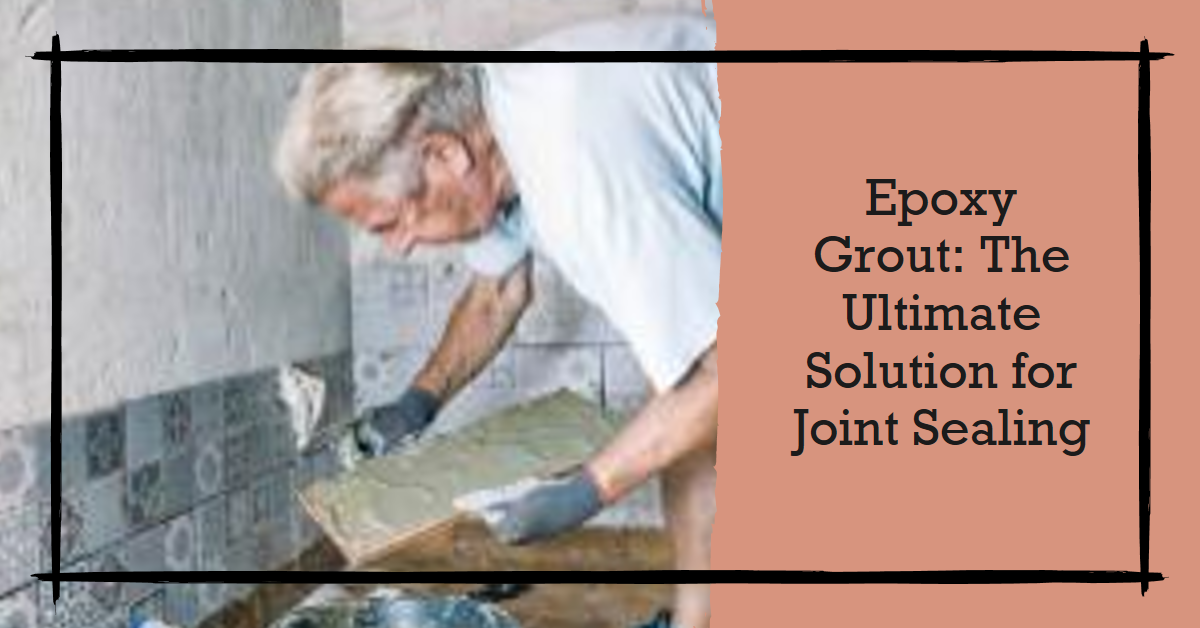Epoxy grout for joints features, advantages, and instructions for use.

Epoxy grout for joints is a substance that must use to fill joints after finishing walls or floors with ceramic tiles. The modern market of materials for home decoration offers a large number of varieties of these mixtures, but epoxy-based grout is in the highest demand.
Features of the epoxy mixture
Epoxy grout for joints does not change color after hardening; it can withstand acidic and alkaline influences. And some types of epoxy grout can even use for facade and exterior work. This material is suitable for processing mosaics, porcelain, stone, and pool tiles. This grout is made in various shades; you can even purchase mixtures with silver, gold, or metallic effects.
The advantages of epoxy grout for joints include the following:
- Increased elasticity;
- Resistance to mechanical stress, eliminating the appearance of cracks and scratches;
- Moisture resistance, as well as antifungal properties;
- Ability to withstand temperatures in the range from -20 to +90 degrees;
- This grout does not fade over time or change its technical properties.
- Many people value epoxy grout for joints because it is resistant to stains and deformation and does not settle when cured.
- With all these positive aspects, epoxy grout for joints also has several disadvantages. These include a not-very-affordable price and the fact that you need to purchase a grout remover to work with it. It is worth remembering that it is challenging to work with, as it requires experienced hands. If all the rules for working with epoxy are not followed, the material consumption can be significant, and the seams can turn rough. Also, if misused, streaks may remain on the finishing surface. After applying the grout, this mixture cannot be level – only corrected using a coarse grater. Since sand is use to manufacture this material, it has a rough surface when hardened.
How to work with grout
To work with this composition, you must prepare tools such as an electric drill, a cellulose sponge or simple foam rubber, a grater, rubber spatulas, a skipper, a construction mixer, and rubber gloves.
Preparation of grout for epoxy resin joints
When mixing the material, two components are use. The first component includes elements such as quartz sand, oxide resin, dye, and plasticizer. The second component is the hardener. After mixing them, it is necessary to work out the resulting mixture for an hour; otherwise, it will spoil.
Several companies offer epoxy grout in Melbourne, including Omnidry, which is known for its fast turnaround times, competitive pricing, and experienced applicators.
How to form and fill joints with epoxy grout
Working with epoxy is similar to other mixtures. The only difference is that you must still form and sand the seam before dries. This is why you need a foam sponge. All seams should wash out with its help, but it is essential to ensure all joints are dry before applying. The seams are fill using a rubber spatula. It would help if you did not mix much grout at once since the “epoxy” hardens very quickly due to contact with oxygen. It is important to remember that if you are working on a horizontal surface, you cannot move on it until the mixture has completely hardened. Complete hardening occurs approximately on the fifth day.
Also Read: Defining Your Signature Style with 2024’s Stussy Hoodie
One hour after finishing work, the seams should be moisten with a spray bottle. The joints must be smooth with your finger to remove any possible irregularities. After 24 hours, you need to remove the epoxy coating using mixtures intended for this. To do this, apply the substance to the tile and clean it. However, you should follow the instructions indicated on the concentrate package. You can wash it off using a self-squeezing mop. If minor marks are left on the cladding, they can wipe off with a cellulose sponge. After the base has dried, check the tiles for plaque. If it is, then the cleaning procedure should be repeat.
Most often, this grout is use for joints:
- When it is necessary to seal the joint between tiles in the kitchen, shower and bath, hallway, or dining room.
- It also seals seams when finishing baths, saunas, and swimming pool bowls.
- For processing tile joints on terraces and open areas.
- When the joint width is only 1-16 mm.
- When it is necessary to apply a tiled base to a “warm floor” structure.








